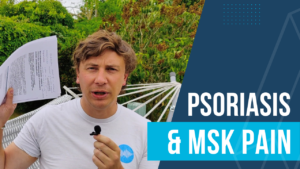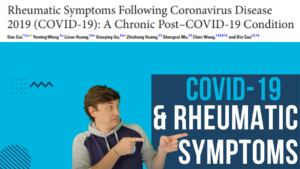I have for a long time avoided this subject and I have decided to finally try and include this in my repertoire as the number of questions continues to increase. This is certainly an evolving area of knowledge for me and as a result this is not complete, nor do I expect it to be free from errors. Keep an eye out for further blogs and resources on the subject as I am able to learn more.
The thing that finally tipped me over was attending the BSR Case Based Conference this October, it provided information in a way I was able to digest and an understanding that these patients are going to arrive in our MSK clinics and its remiss of me to ignore their existence any longer just because I find it difficult to understand…
As usual feedback is greatly appreciated and any further reading for me please send it my way!
Just want audio? Listen as a podcast here and get reminded of new records!
PLEASE REMEMBER – THIS BLOG IS NOT A REPLACEMENT FOR CLINICAL REASONING, IF YOU ARE UNSURE GET ADVICE
Introduction
Firstly lets consider Juvenile Idiopathic Arthritis (JIA) as an umbrella term for the various types of arthritis that affect children. There are a few types that come under this term much like the adult types of inflammatory arthritis. For the purposes of not blowing our minds these are – Juvenile Rheumatoid Arthritis (J-RA), Juvenile Spondyloarthritis (JSpA) both axial and peripheral, and of course Juvenile Connective Tissue Disorders (J-CTDs) like Lupus (bloody lupus, makes me regret my specialism).
What we shouldn’t do is consider these young people versions of the adult conditions. The present differently and of course the assessment is rather different than adults. They occur across the spectrum of ages from very new borns to 18. There is some crossover as some 15+ year olds will develop more adult appearing conditions. As with all things in medicine there is no convenient hard line where suddenly they move into the adult diagnostic group.
From what I have learned recently, you could do a lot worse than use adult symptomology to guide you and it would probably catch some of those presenting to you but that’s not going to cut it in places like FCP clinics or more challenging presentations.
Presentation
The good news is that inflammatory pathology presents like inflammatory pathology even when its in children, so all those things we have learned regarding red, hot, swollen joints remain true with synovitis. Past medical history, family history and associated conditions remain the same as well so we are still looking for other inflammatory conditions that will increase the risk of developing JIA (e.g. Uveitis, Psoriasis, Colitis…)
The less good news is the subjective nuance of symptomology is also the same except in these scenarios is has to be gleaned from a child. I suspect in some cases much like in adults, this will be very easy, in others very difficult. Really consider how you are going to ask about early morning joint stiffness, the affect of activity and rest, what happens at night and other potentially affected joints.
Affected Joints
50% of presentations are an Oligoarthritis (one joint), 40% are polyarthritis (more than one joint) and 10% are enthesis related. Depending on the type of JIA you are faced with these may be back pain, peripheral joint(s) or a combination. The knee is commonly affected as a single joint, especially in boys with Psoriasis (or family history of).
Back pain may not be particularly inflammatory so be on a keen look out for the associated conditions and be highly suspicious in eye conditions or inflammatory bowel disease.
Impact on patients
The most impactful symptoms on patients are Pain, low mood, inability to walk/run, fatigue and swelling/stiffness. As many as 40% of patients can have ongoing arthritis symptoms into adulthood so early recognition, lifestyle and activity management are vital.
Moving forwards
Refer suspected patients to Paediatric clinics as appropriate in your area without delay. You can investigate if you deem appropriate but this must not delay the referral.
Educate about sleep, diet, maintaining activity levels as able and consider referrals to manage mental health if necessary.
End
I hope this has been useful, I will be aiming to delve into this in more detail as I can in the future. I would be delighted to be provided with learning materials. I hope to create a module in my https://rheumatology.physio/product/rheumatology-physio-online-course/ in the next few months as well.
Get me any feedback you might have so that I can grow and improve.
See you next time!


